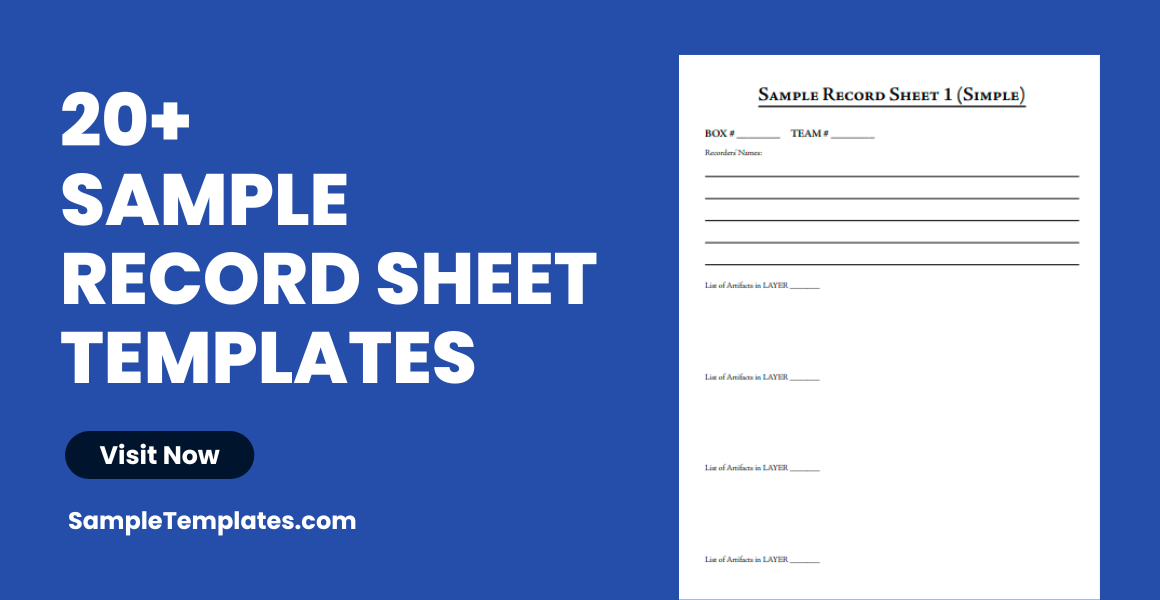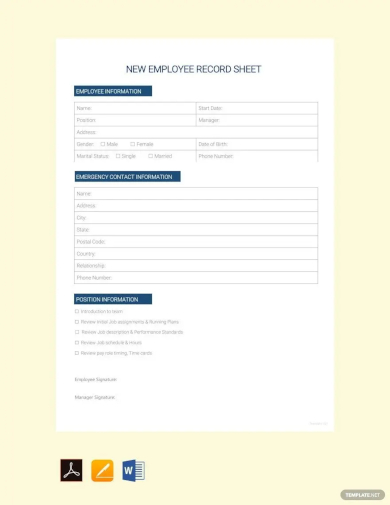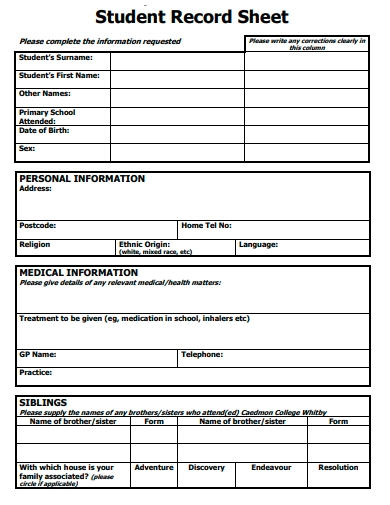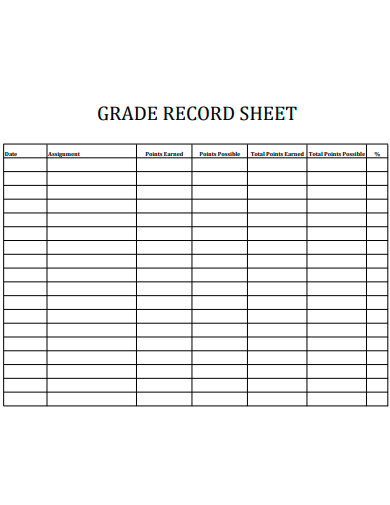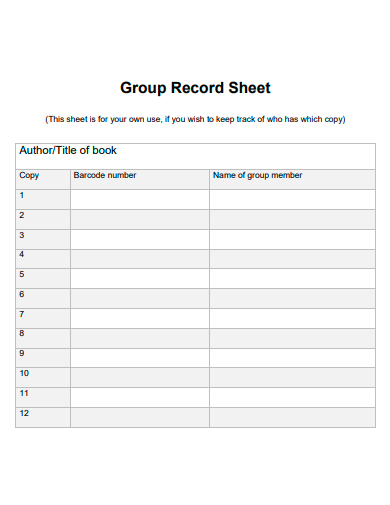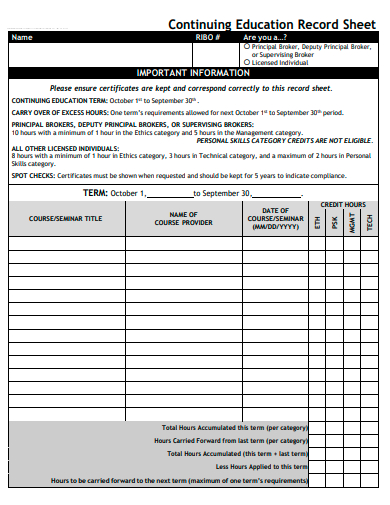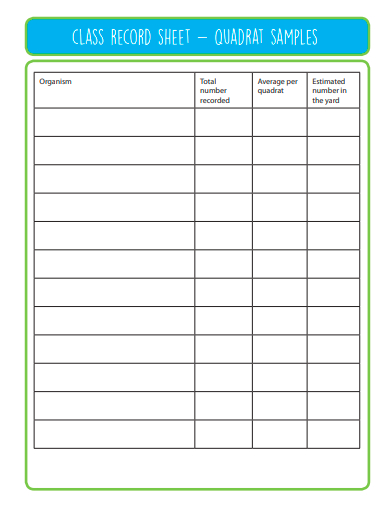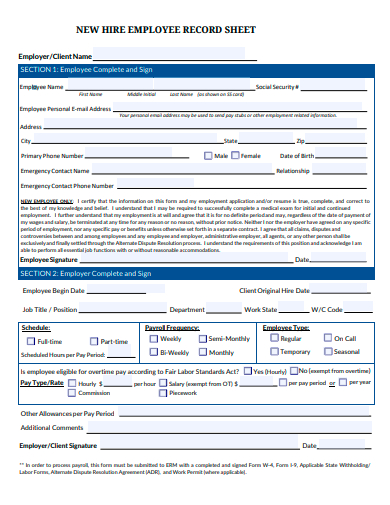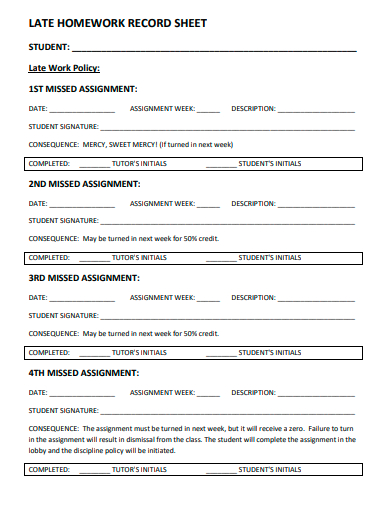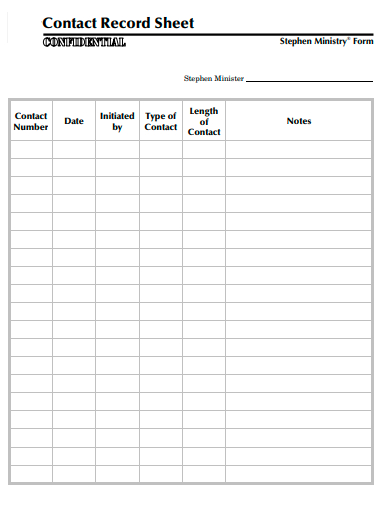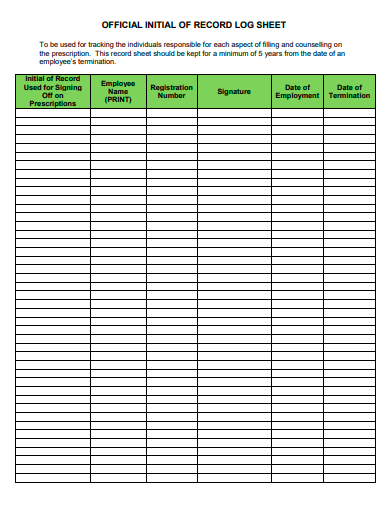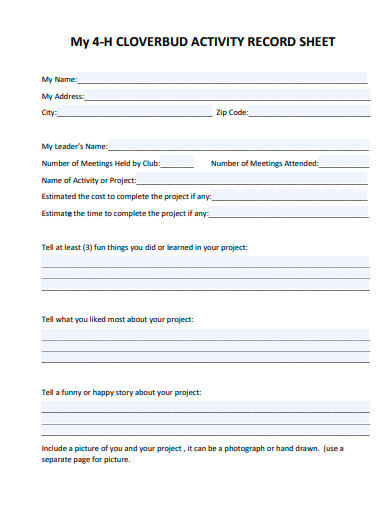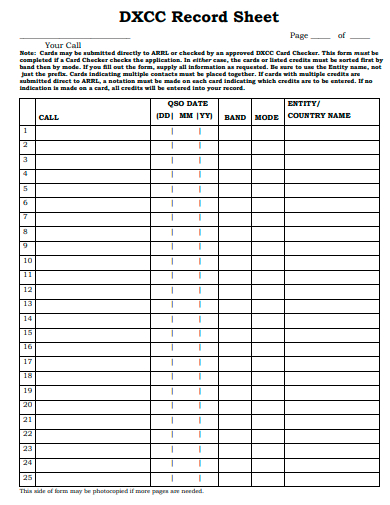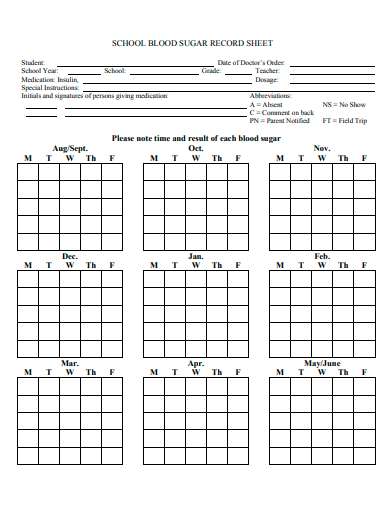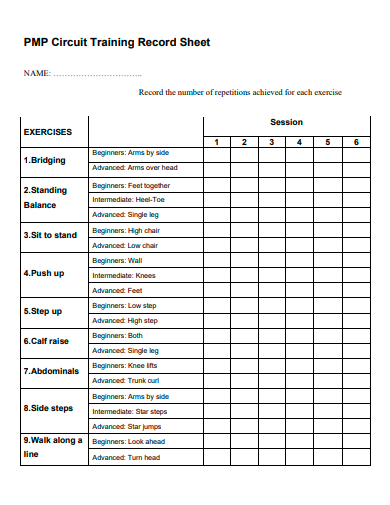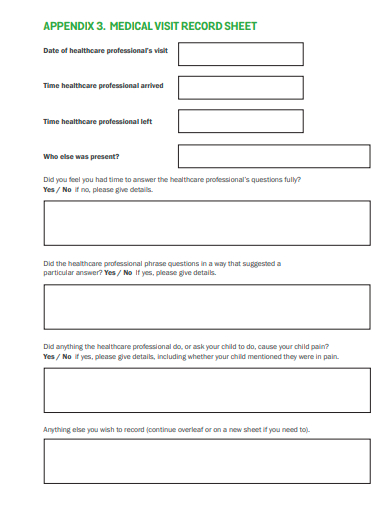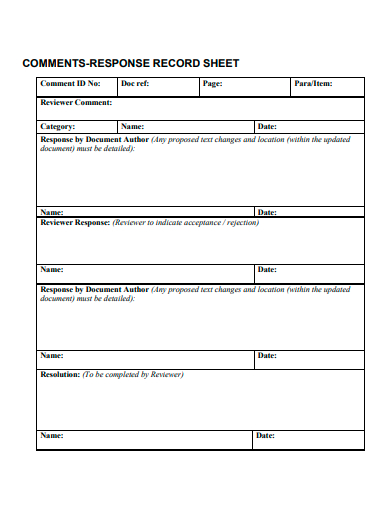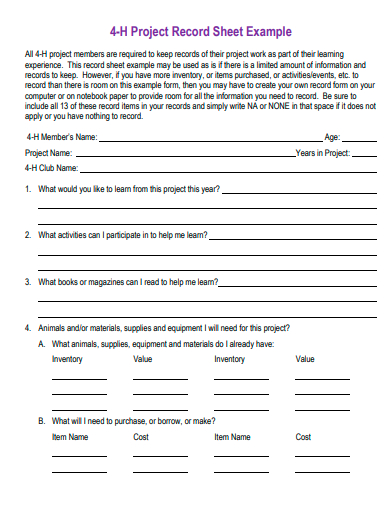Introducing our versatile Sample Record Sheet Template, tailored for seamless data management with a special focus on Log Sheets. Whether you need to maintain a meticulous inventory log, monitor project progress, or organize crucial information, our user-friendly template simplifies the process. Designed with an intuitive layout, this template guarantees precision and accessibility for all your log sheet needs. Bid farewell to data disarray and embrace effortless accuracy. Download our Sample Record Sheet Template now to elevate your log sheet management and supercharge productivity.
20+ Record Sheet Samples
1. New Employee Record Sheet Template
2. Sample Student Record Sheet Template
3. Grade Record Sheet Template
4. Sample Record Sheet Template
5. Sample Group Record Sheet Template
What is a record sheet?
A record sheet is a fundamental document used across various fields and industries to systematically collect, organize, and manage data or information. Its primary purpose is to provide a structured framework for recording and tracking specific details, events, transactions, or observations. These sheets are employed in diverse settings, including business, healthcare, education, research, and more, to ensure accurate data management and retrieval.
At its core, a record sheet typically consists of a grid or table format with designated fields or columns where data can be inputted, recorded, or logged. The specific layout and content of the sheet sample can vary widely depending on its intended use. However, certain common elements are often found in record sheets, such as dates, descriptions, quantities, and other relevant data points.
In various industries, the term record sheet may be used interchangeably with terms like “og sheet, data sheet, or record-keeping sheet, but the underlying concept remains consistent: to maintain a chronological and organized account of information.
In a business context, record sheets are frequently employed for tracking inventory levels, sales transactions, employee attendance, and financial records. These sheets play a crucial role in ensuring transparency, compliance with regulations, and informed decision-making.
In healthcare, record sheet are indispensable for documenting patient information, including vital signs, medications administered, and medical procedures performed. They serve as an essential tool for healthcare professionals to maintain accurate patient histories and provide high-quality care.
In research and scientific endeavors, record sheets are used to record experimental data, observations, and findings. Researchers rely on these sheets to maintain a meticulous record of their work, enabling them to reproduce experiments, analyze results, and draw meaningful conclusions.
In education, teachers and educators use record sheets to keep track of student attendance, grades, and progress. These sheets facilitate effective communication with students, parents, and administrators, ensuring that educational objectives sample are met.
In essence, a record sheet is an indispensable tool for anyone who needs to systematically collect and maintain information. Its versatility and adaptability make it a valuable asset in a wide range of professional and personal contexts, ensuring that data is accurate, organized, and readily accessible when needed.
6. Continuing Education Record Sheet Template
7. Class Record Sheet Template
8. New Hire Employee Record Sheet Template
9. Sample Late Homework Record Sheet Template
How to make a record sheet?
Creating a record sheet is a valuable skill for various purposes, whether it’s for business, healthcare, research statement, education, or personal use. A record sheet is essentially a structured document or template used to collect, organize, and maintain specific information systematically. Here’s a detailed guide on how to make a record sheet:
Determine the Purpose:
Before you start creating a record sheet, clearly define its purpose. Consider what type of information you need to record and why. Understanding the purpose will guide the design and layout of your sheet.
Identify Key Data Points:
List the essential data points or fields that you need to capture in your record sheet. For instance, if you’re creating an inventory record sheet, you might need fields for item name, quantity, date received, and date issued.
Choose a Format:
Decide on the format for your record sheet. Common formats include tables, spreadsheets (using software like Microsoft Excel or Google Sheets), or custom-designed forms. The choice depends on your preferences and the complexity of the data.
Design the Layout:
Create the layout of your record sheet. If you’re using spreadsheet software, set up columns and rows based on the data points you identified. Ensure that the columns are wide enough to accommodate the data you’ll be entering.
Include Headers and Titles:
Place a clear header at the top of your record sheet. Include essential information such as the title of the sheet (e.g., “Inventory Record Sheet”), a brief description of its purpose, and any reference numbers or dates that may be relevant.
Format for Clarity:
Enhance the clarity and readability of your record sheet by using formatting options. You can use bold fonts for headings, shading or color-coding to distinguish sections, and borders to separate columns and rows.
Add Date Fields:
If tracking dates is important for your records, incorporate date fields into your sheet. Include fields for the date of entry or any other relevant dates.
Test and Adjust:
Before finalizing your record sheet, test it by entering sample data. Ensure that it captures the information effectively and that all calculations (if any) are accurate. Make any necessary adjustments based on your testing.
Include Instructions:
If others will be using your record sheet, provide clear and concise instructions on how to complete it. Explain any specific terminology or abbreviations used and specify any guidelines for data entry.
Review for Accuracy:
Review the layout and content of your record sheet for accuracy. Ensure that it aligns with the purpose you defined initially and that all necessary data points are included.
Printing or Sharing Digitally:
Depending on your needs, you can either print physical copies of your record sheet or share it digitally with relevant parties. If sharing digitally, consider using cloud storage or document management systems for easy access and collaboration.
Regular Updates:
To maintain the integrity of your records, commit to regular updates. Consistently enter new data and review existing information to ensure it remains accurate.
Backup and Security:
If your record sheet contains sensitive or critical information, implement appropriate security measures and backup procedures to protect the data from loss or unauthorized access.
By following these comprehensive steps, you can create a well-structured and effective record sheet tailored to your specific needs. Whether for professional or personal use, a well-designed record sheet is a valuable tool for organized data management and record-keeping.
10. Contact Record Sheet Template
11. Sample Record Log Sheet Template
12. Activity Record Sheet Template
13. Sample Vocabulary Record Sheet Template
14. Printable Record Sheet Template
15. School Blood Sugar Record Sheet Template
The benefits of using a record sheet
Using a record sheet offers a multitude of benefits across various domains, from business and healthcare to research and education. These advantages stem from the structured and systematic approach to collecting and organizing data that record sheets provide:
Accurate Data Management: Record sheets facilitate accurate data collection and maintenance. By providing a structured format, they reduce the chances of errors, omissions, or inconsistencies in recorded information.
Efficient Organization: A well-designed record sheet helps in efficiently organizing data. Information is categorized into relevant fields or columns, making it easy to locate specific data points quickly.
Chronological Tracking: Record sheets often include date fields, enabling users to track information chronologically. This chronological order is valuable in various applications, such as tracking changes over time or maintaining historical records.
Improved Decision-Making: Access to organized and up-to-date data on a record sheet empowers individuals and organizations to make informed decisions. It provides a clear overview of relevant information and trends.
Enhanced Accountability: In professional settings, record sheets can establish accountability. For example, in business, they help track employee attendance, ensuring that work hours are accurately recorded.
Compliance and Regulation: Many industries have regulatory requirements that demand accurate record-keeping. Using record sheets ensures compliance with these regulations, reducing the risk of legal or financial penalties.
Improved Communication: Record sheets facilitate effective communication by providing a standardized format for sharing information. They are particularly useful for sharing data between different departments or teams within an organization.
Streamlined Workflow: In healthcare, record sheets are essential for documenting patient information and treatment plans. This documentation streamlines healthcare workflows, improving patient care and safety.
Data Analysis: Researchers and analysts benefit from record sheets because they offer structured data that can be easily analyzed. This is crucial for drawing meaningful insights and making data-driven decisions.
Time Savings: Using record sheets saves time by eliminating the need to create ad-hoc data recording methods. This time-saving aspect is particularly beneficial in fast-paced work environments.
Consistency: Record sheets enforce consistency in data collection and presentation. This is crucial when multiple individuals are involved in recording information, ensuring uniformity in data entry.
Historical Reference: Over time, record sheets serve as historical references. They provide a comprehensive archive of past events, making it easy to track changes, identify patterns, and evaluate performance over the long term.
Documentation and Proof: Record sheets can serve as documentation and proof of activities or transactions. In legal or financial contexts, they act as evidence in case of disputes or audits.
Personal Organization: On a personal level, individuals can use record sheets for various purposes, such as tracking personal expenses, fitness progress, or home inventories. This helps with goal tracking and personal organization.
Versatility: Record sheets are highly adaptable and can be customized to suit specific needs. Whether for professional, academic, or personal use, their versatility makes them a valuable tool.
In summary, the benefits of using a record sheet are numerous and span across different sectors and activities. From improving accuracy and efficiency to aiding in decision-making and compliance, record sheets are a valuable resource for maintaining organized, reliable, and accessible data.
16. Sample Circuit Training Record Sheet Template
17. Medical Visit Record Sheet Template
18. Weight Record Sheet Template
19. Sample Response Record Sheet Template
20. Project Record Sheet Example
21. Record Book Score Sheet Template
Why should you use a record sheet?
Using a record sheet is a practical and advantageous choice in a wide range of situations and industries. Here are several compelling reasons why you should consider using a record sheet:
Data Organization: Record sheets provide a structured format for organizing data. This structured layout ensures that information is systematically captured and can be easily accessed and reviewed.
Accuracy: One of the primary benefits of record sheets is the improvement in data accuracy. With designated fields for specific information, there is less room for error or omission, leading to more reliable records.
Efficiency: Record sheets streamline data entry and retrieval processes. They eliminate the need for ad-hoc methods of data recording, saving time and reducing the likelihood of data duplication.
Compliance: In many industries, accurate record-keeping is a legal requirement. Record sheets help organizations stay compliant with regulations, reducing the risk of legal consequences or fines.
Decision-Making: Access to well-organized data on a record sheet enhances decision-making. It provides a comprehensive overview of relevant information, making it easier to analyze trends, spot patterns, and make informed choices.
Accountability: Record sheets can establish accountability, particularly in professional settings. For instance, they help track employee attendance, ensuring transparency and fairness in labor management.
Communication: Record sheets serve as a standardized format for sharing information among team members or departments. This consistency in presentation fosters effective communication within an organization.
Historical Reference: Over time, record sheets become valuable historical references. They document past events, actions, or transactions, facilitating historical analysis and performance evaluation.
Analysis and Reporting: Researchers and analysts benefit from record sheets as they provide structured data that can be easily analyzed and reported on. This is critical for deriving meaningful insights and conducting data-driven research.
Streamlined Workflow: In healthcare, for example, record sheets are essential for documenting patient information and treatment plans. This documentation streamlines healthcare workflows, enhancing patient care and safety.
Proof and Documentation: Record sheets can serve as proof or documentation of activities or transactions. In legal or financial contexts, they act as tangible evidence in case of disputes or audits.
Personal Organization: On a personal level, individuals can use record sheets to track and manage various aspects of their lives, such as finances, fitness goals, or personal projects. This helps with personal organization and goal tracking.
Versatility: Record sheets are highly versatile and can be customized to suit specific needs. They can be adapted for professional, academic, or personal use, making them a versatile tool for various tasks.
In conclusion, using a record sheet is a practical choice for anyone who needs to collect, organize, and maintain data accurately and efficiently. Whether in a professional setting to ensure compliance and transparency, for research and analysis, or for personal organization and tracking, record sheets are valuable tools that simplify the task of data management and provide numerous benefits.
Related Posts
FREE 20+ Training Sheet Samples in PDF | MS Word
FREE 20+ Employee Sheet Samples in PDF | MS Word
FREE 10+ Employee Attendance Sheet Samples in PDF
FREE 12+ Balance Sheet Formats in MS Word | PDF | Excel
FREE 5+ Construction Bid Sheet Samples in PDF | MS Word | Excel
FREE 15+ Construction Timesheet Samples in PDF | MS Word
FREE 26+ Construction Sheet Samples in MS Word | Google Docs | Excel
FREE 20+ Continuation Sheet Samples in PDF | MS Word
FREE 33+ Student Sheet Samples in PDF | MS Word
FREE 32+ Planning Sheet Samples in PDF | MS Word
FREE 10+ OC Sheet Samples in PDF
FREE 10+ Beat Sheet Samples in PDF
FREE 3+ Paper Sign Up Sheet Samples in PDF
FREE 50+ Summary Sheet Samples in MS Word | Google Docs | Google Sheets | Excel | PDF
FREE 10+ Cleaning Bid Sheet Samples [ Commercial, House, Residential ]
